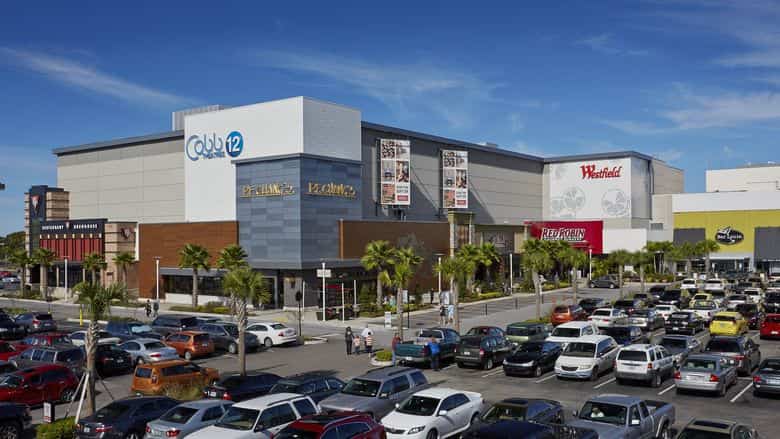by Margie Manning
The number of shopping malls likely will shrink dramatically in the next few years, and the real estate they occupy is expected to take on new characteristics as consumer buying trends evolve.
“We’re at the beginning of what is a massive shift in commercial real estate from retail to industrial,” said Rachel Elias Wein, founder and CEO of WeinPlus, a St. Petersburg-based strategy and management consulting firm focused on retail, consumer and real estate sectors.

Rachel Elias Wein
Consumer spending, which includes both retail purchases and supply chains, has been changing over the past 10 to 15 years, but the Covid-19 pandemic accelerated the change, as retailers rethink how many square feet they need to meet customers’ needs.
“More of those square feet are going to be added to industrial, and those square feet are largely going to come from the store. So we’re seeing a shift from what is traditionally called retail store square footage into fulfillment and supply chain square footage,” Wein said.
Wein expects to see that trend play out in Clearwater, as Westfield Countryside goes through the foreclosure process. Mall owner Uniball-Rodamco-Westfield has not made mortgage payments since May 2020 and owes nearly $150 million to its lender, Morgan Stanley, according to a lawsuit filed Dec. 29 in Pinellas County Circuit Court. The lender has asked that a receiver be appointed to operate the property until it can be sold. Westfield Citrus Park in Tampa faces a similar action.
While not commenting directly on the local Westfield malls, Wein said malls nationally have struggled.
“There are over 1,000 malls in the country. If you had asked me five years ago, how many malls do we need, I would have said there were 200 to 400 malls that were on the bubble,” Wein said. “Now post-pandemic, for a given metro such as the Tampa metro area, how many malls does this area need? We probably have close to a dozen malls and I just don’t think we need anything close to that.”
‘Essential retail’
There are several factors at work, including the demand for tenant space within malls.
“If I’m a retailer with 1,000 locations and 100 percent of them closed in April 2020, how many of those do I need to open back up? In my path to profitability would I be better off if I only opened up the 30 percent or the 50 percent that were the best performers? This is where retailers have to make these decisions individually and then the owners of the malls have to look at the decisions the retailers have made and say if enough of them have opened back up to have a viable building that can support the debt I have on it,” Wein said. “More and more that decision will be no. I don’t have enough tenants paying enough rent that I can pay my mortgage.”
In addition, consumer spending has shifted. In 2018, about $930 billion was spent on food outside the home at restaurants, or about 54 percent of total consumer spending on food. The remaining 46 percent of consumer food spending, about $780 billion, was spent in grocery stores.
But the pandemic brought a massive change, and about a $200 billion shift in spending. About $100 billion of that went from restaurants to grocers. Because it costs less to buy food at the grocery store, the other $100 billion that previously was spent at restaurants went into consumers’ pockets and was used for other retail purchases.
“What we’re seeing is a reshuffling in retail. I think we will find total retail spend will be similar in 2020 to 2019, but it will largely be pulled from restaurants and it will be going into general retailers and grocers largely,” Wein said. “That’s why we saw very large increases for Costco, Home Depot, Lowe’s, Target, Walmart, Publix, any ‘essential retail,’ a term that didn’t exist pre-pandemic. All of these folks are doing exceptionally well.”
Barbell impact
Wein makes a distinction between large, enclosed shopping malls such as Countryside that for the most part don’t have “essential retail,” as opposed to luxury malls such as International Plaza in Tampa, and open-air, big box shopping centers and neighborhood centers anchored by a grocery store.
“Far and away the success in the retail sector has been with the open-air retailers. They are more likely to be essential. They are more likely to have been open throughout the course of the pandemic,” Wein said.
Scale also matters. The biggest retailers were prioritized as supply chains were squeezed, to the detriment of regional retailers. Mom and pop stores with a single location and loyal customers also are generally doing OK, Wein said, as the “shop local” mantra gains traction.
“You go to the big guy and you go to the little guy, and who’s getting hurt are the ones in the middle. If you are a regional [retailer] with five to 50 locations, those guys are really going to struggle,” Wein said. “I see a barbell where the biggest of the big are doing really well and the smallest of the small are doing OK also … but the biggest pain point is felt somewhere in the middle. And that’s where those malls fit it. They’re not the value discount or the grocer or the local neighborhood place to go, and they’re not the fancy high-end mall. Because of that, they are languishing somewhere in the middle.”
She now expects no more than 300 or 400 shopping malls nationwide to survive.
Malls in Cleveland, Boston and other communities have been turned into fulfillment sites for Amazon. That could happen locally, as well, Wein said. Alternatively, the Clearwater site could become a combination of industrial and residential space, as the housing sector continues to grow in the Tampa-St. Petersburg area.
The pandemic and the growing acceptance of working from home and flex office space has had an overall negative impact on the largest metro areas, but it has been a positive for smaller metros, where people can easily telecommute, she said.
“Cities that have a better quality of life, that have lower cost of living, that have a fabulous airport, that’s where people want to be,” Wein said. “Those things are largely positive for our area.”








